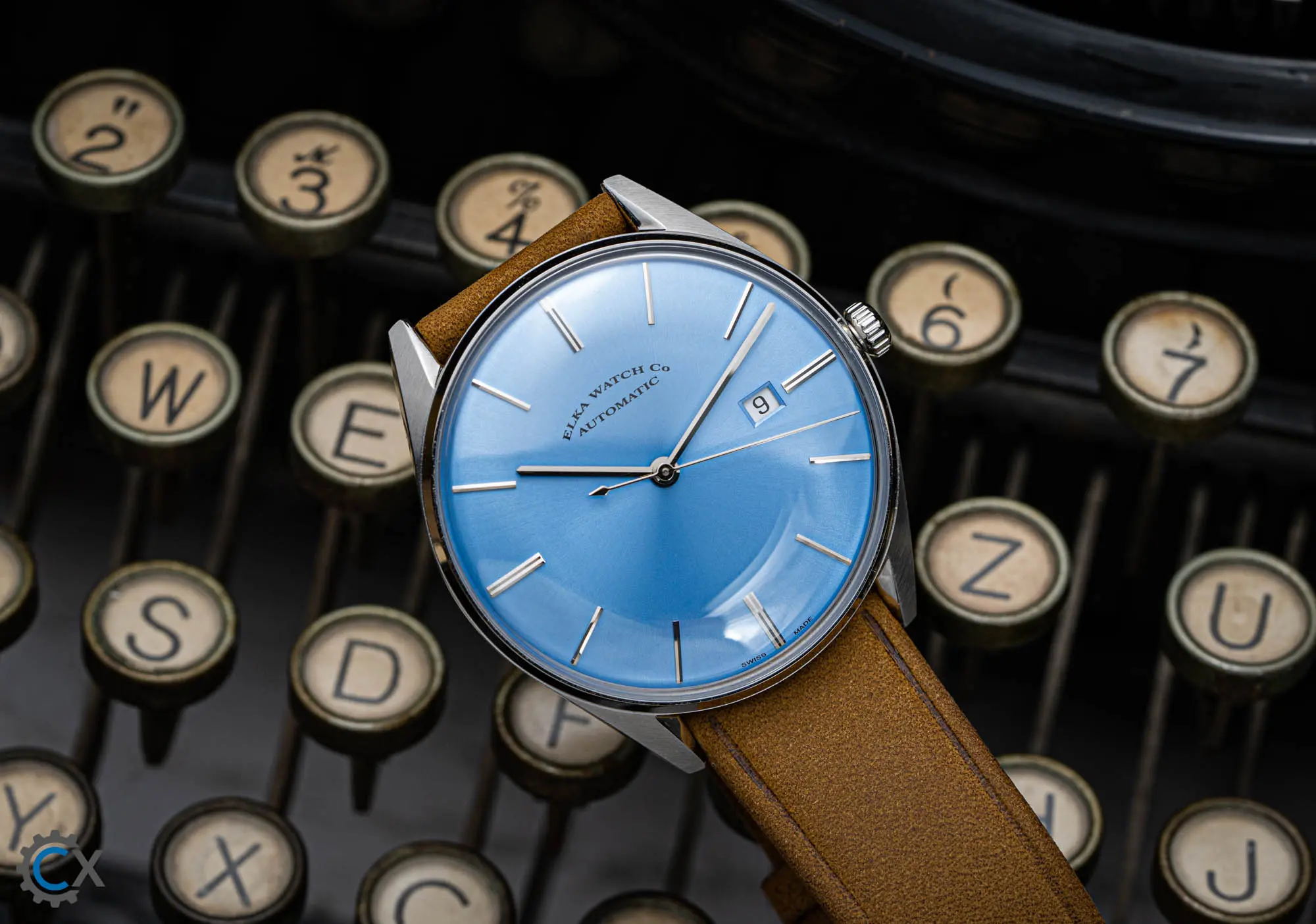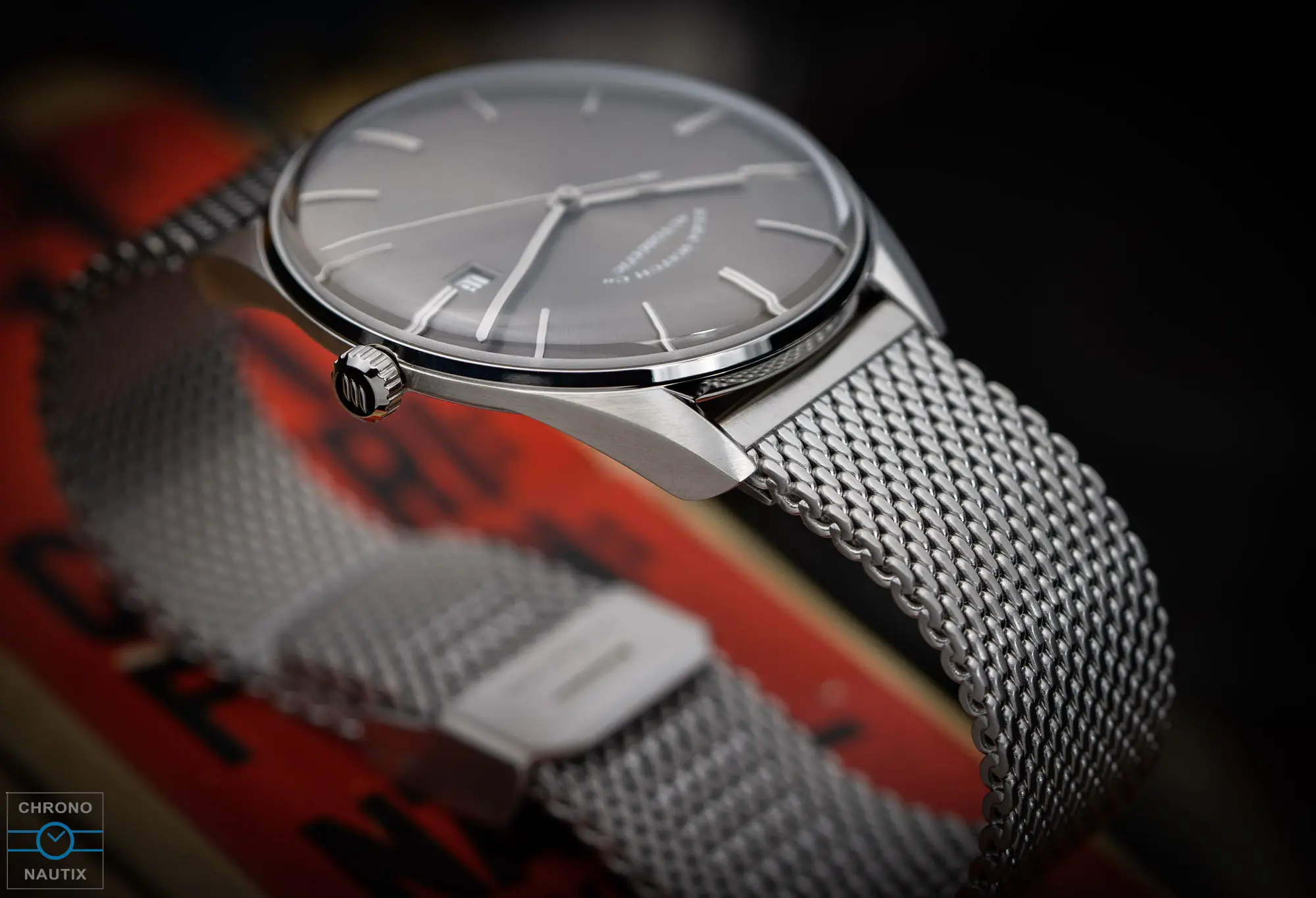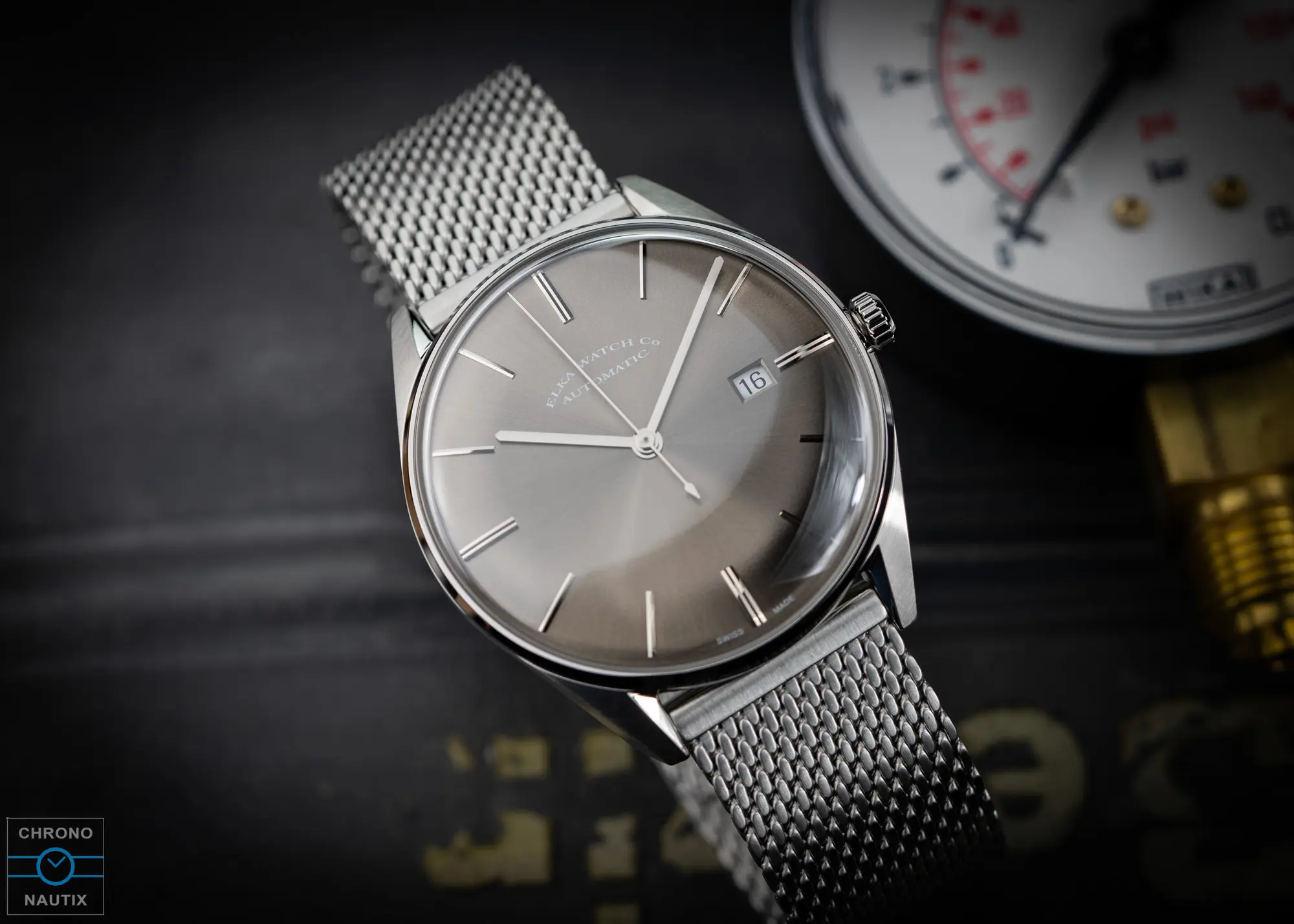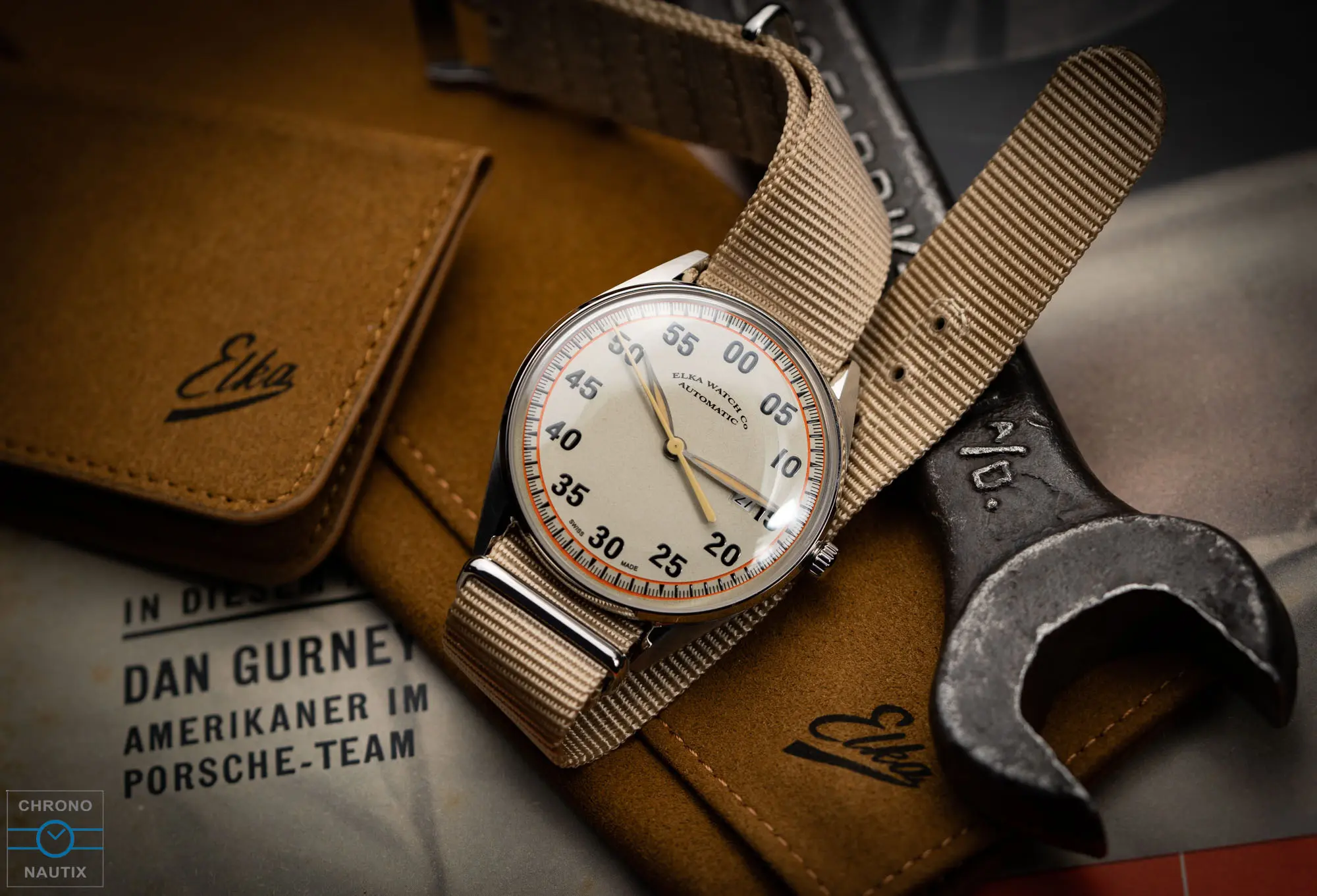ELKA WATCH CO : X AND D SERIES FROM "ELKA 2.0" IN THE TEST
Original text in German: click here:
Elka Watch Co: X- und D-Serie von "Elka 2.0" im Test | CHRONONAUTIX Uhren-Blog
A new watch brand based on a historic brand name that no longer exists - such 'resurrections' are not unusual in the microbrand cosmos. It is against this backdrop that a new microbrand, Elka Watch Co, has been added to the list for 2021. Behind the relaunch of Elka is not a newcomer (as is often the case with microbrands), but someone with decades of experience within the group in the field of top-of-the-range watches - and this can also be seen by looking at the many details that distinguish 'Elka 2.0' quite noticeably from other microbrands...
About Elka Watch Co: an acronym with two meanings The roots of the historic Elka watch brand go back to the 19th century. The name Elka comes from a descendant of the Kiek family of watchmakers, who originated in Hamburg and later moved to Groningen and Amsterdam. Elka is an acronym that stands for Ernst Louis Kiek Amsterdam. This family of watchmakers produced special timepieces such as the tactile clock, a palpable clock for the blind. A few years after the Second World War, in 1949, Elka also opened a Swiss branch in La Chaux-de-Fonds, in the canton of Neuchâtel.
In the mid-1970s, the Elka brand, like many other names, disappeared from the scene - the quartz crisis had hit and traditional mechanical watch manufacturers were ousted by the new cheap quartz watch technology from Japan.
Behind the rebirth of Elka is a certain Hakim El Kadiri - and here we are already at the second acronym, because 'Elka' is also Hakim's nickname, which ultimately contributed to him securing the rights to the Elka brand. Hakim stresses that there is no official link with the former Elka company or the Kiek family.
But unlike many microbrands, Hakim is no stranger to the industry: from 2002 to 2021, he worked for the Swatch Group as Head of Product Management and in other roles, including for the Swatch, Hamilton and Rado brands. Then COVID-19 arrived and Hakim decided (like many others during the pandemic) that it was time for a change.
Elka's two current collections, the X series and the D series, are built around the same case and movement (more on the technology in a moment). The case-shaped Chevé sapphire crystal, with its convex, outwardly curving edge and plenty of retro charm, is also a feature common to both model variants. Incidental note: in 1925, Louis Eduard Kiek invented an "unbreakable" plastic watch glass with a strong curvature, which he exported all over the world through the new company N.V. Enohi (Eerste Nederlandse Onbreekbare Horlogeglazen Industrie) - until 1940, when Nazi Germany occupied the Netherlands.
In essence, then, 'only' the dial and hands make the difference between the X Series and the D Series - and a pretty big difference at that...
The Elka 'D' series was inspired by a dial that Swiss watchmaker Ulysse Nardin, founded in 1846, once designed for an Elka model of the time . This collaboration is probably due to the fact that Elka was one of the first official distributors of various high-end Swiss watch brands in the Netherlands - with the likes of Rolex for example and - of course - Ulysse Nardin on display.
Seen through designer glasses, one certainly reflexively thinks of the notion of the Bauhaus watch, so common everywhere. But at the end of the day, this minimalism simply left its mark on the timepieces of the 60s - and this charm, in my opinion, Elka has captured wonderfully, especially in combination with the aforementioned sapphire crystal, which creates superb perspective distortions at the periphery.
I particularly like the pop blue dial variant of Elka's D series, which stands out clearly from the currently very fashionable Tiffany blue (also known as "glacier blue"), which is much paler or less saturated - here, among other things, a direct comparison with the glacier blue Tissot Powermatic 80 What pleases me personally is that the model, with a case diameter of 40.8 mm (lug to lug 46.8), is also suitable for slightly larger male wrists - on my 19 cm wrist, the watch fits perfectly in my opinion. At the same time, the case seems filigree and sufficiently narrow in its optical effect for this type of dress watch, not least because of the gradations on the sides and the super-thin bezel.
The dial of the X Series is much sportier and more instrumental, and borrows its design from the tachymeters or chronometers used in the past, for example, to measure time in competitive sports. What stands out are the minute numerals running from "00" to "55" and the external timer with its scale in fifths of a second, highlighted by orange lines.
In 1928, for example, Elka supplied this type of chronometer for the Amsterdam Summer Olympic Games - here is an example with the inscription "NEDERLANDSCH OLYMPISCH COMITE" (= Dutch Olympic Committee) on the dial. Elka also produced on-board instruments with these characteristic minute numerals
The hands on the retro beige dial variant shown here are reminiscent of ageing radium, which has taken on a brownish tinge over the years (today, of course, health-friendly Super-LumiNova luminescent paint is used). It's a pity: for this variant, a date disc matching the dial would have been quite judicious, as the date thus stands out somewhat from the frame.
The Elka X Series is also available in a distinctly more modern variant, with a deep dark blue dial with a sunray finish and all-white hour markers, hands and lettering. The white date disc blends in better with the overall look:
The Elka X series comes with either a colour-matched leather strap or a NATO strap. The NATO strap has a leather 'patch' that reinforces the holes - not only is this handy for reducing fraying from wear and tear at the holes, but it also looks much better. Sometimes it's the little things that count...
As mentioned above, the case is identical for the D and X series and, at 40.8 mm (46.8 lug to lug), it also fits slightly larger male wrists for the X series. The Elka D and X series models pride themselves on not using the Seiko NH35 or Sellita SW200, which equip 99.9999% of micro-brand watches with three hands. Don't get me wrong: these are superb movements, of course, but as a blogger specialising in small watch brands, you're sometimes glad to have something different in front of you.
For example, the Elka D and X series are equipped with the G100 automatic calibre from Manufacture La Joux-Perret SA (MLJP), based in La Chaux-de-Fonds, Switzerland. MLJP differs from Sellita SA in that the Neuchâtel-based company, which employs around 120 people, specialises in the specific requirements of high-value mechanical movements, including tourbillons. LJP calibres are used, for example, in Erwin Sattler's Chronograph II S and the current Fortis Stratoliner S-41.
The dimensions of the G100 are essentially the same as those of the ETA2824 (which should make it easy to swap an ETA2824 for a G100), but it is not (unlike the Selita SW200) a clone of the basic ETA construction, for which the patent has expired. Instead, the G100's construction bears similarities to the Miyota 9015 (see here). And this is certainly no coincidence, as Manufacture La Joux-Perret SA, founded in 1990 as Jaquet SA, has been a subsidiary of Citizen, Miyota's Japanese parent company, since 2012.
At the same time, there are also significant differences: the 9015 has a power reserve of 42 hours, while the G100 offers a much greater power reserve of 68 hours. The accuracy of the Miyota 9015 when it leaves the factory is -10 to +30 seconds per day, which is far from phenomenal, compared with +/-12 seconds per day for the G100.
Conclusion: the Elka D and X series The Elka D and X series are available from 1890 Euros for example from the official German distributor Chronofactum. That's a very high price for a 'simple' three-hand watch from a relatively young microbrand. On the other hand, I welcome the fact that the head of the Hakim brand is embarking with Elka on a path that clearly distinguishes it from other micro-brands, both in terms of quality (note the perfectly finished leaf and case in the close-ups? And it's certainly necessary, because in the €500 to €1,000 price bracket, countless micro-brands with rather advantageous positioning are jostling each other with models generally powered by the Seiko NH35 or the Miyota 8000.
Whatever the case, I can't wait to see what else Elka comes up with - how ingenious would it be, for example, to re-issue the Elka Chrono Automatic in a case that's as close to the original as possible?





